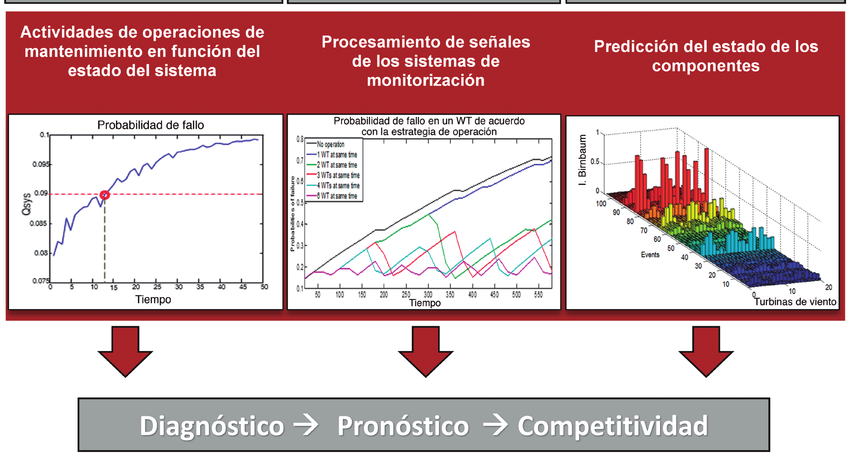Optimization of Control and Management of Resources in the Maintenance of Offshore Wind Farms Through Advanced Mathematical Models (WindSeaEnergy)
Ref.: DPI2012-31579
Funded by: Ministerio de Economía y Competitividad, Proyectos de Investigación Fundamental no Orientada 2012.
![]()
From: 01/06/2013 to: 01/06/2016
The consortium: UCLM, CUNEF, University of Birmingham (UK), University of Glasgow (UK), U of Lancaster (UK)
Granted: 47.000€
The European Union’s energy and environmental policies are aimed at promoting and developing offshore wind platforms. This trend implies that the Spanish electrical system will increasingly depend on this type of power generation system. Wind turbines for this purpose are larger, more complex, and require high standards of safety, reliability, availability, and maintainability. This project addresses these challenges with the ultimate goal of achieving comprehensive and optimal management of this type of wind farm.
The project behind this article builds on and aims to complete the National WindSeaEnergy project (DPI2012-31579), where the most important scientific references in high-impact journals were analyzed. It was observed that there is a significant lack of mathematical models that allow the analysis of signals monitored through Non-Destructive Testing (NDT) to determine the condition of structures, as well as in the optimal management of wind turbines and wind farms.
OptiWindSeaPower has continued and completed this study, initially focused on the rotating elements of wind turbines and their maintenance management, by conducting a more thorough investigation into monitoring systems and signal processing methods for the structural elements of these systems. Data from the national projects IcingBlades and WindSeaEnergy, as well as the European projects OPTIMUS and NIMO, were used as references.
A test bench for a monitoring system based on NDT, specifically using ultrasounds, was designed and developed to determine the structural condition of wind turbines, thereby complementing the set of signals analyzed. A life cycle cost model was created for the predictive maintenance system. Additionally, the use of mathematical models based on time, frequency, and time-frequency analysis is proposed, including Wavelet Transforms, Neural Networks/Artificial Intelligence, signal feature extraction methods, and transfer function derivatives of the system.
Multivariable analysis was carried out using Logical Decision Trees, which will be evaluated using Binary Decision Diagrams, and the importance measures were created using heuristic methods. This approach enables comprehensive control and optimization of a wind turbine’s condition. Finally, new significance indices based on costs were created, and the optimization problem was formulated and solved using metaheuristic methods to determine the optimal investment policy for managing this type of wind farm.

